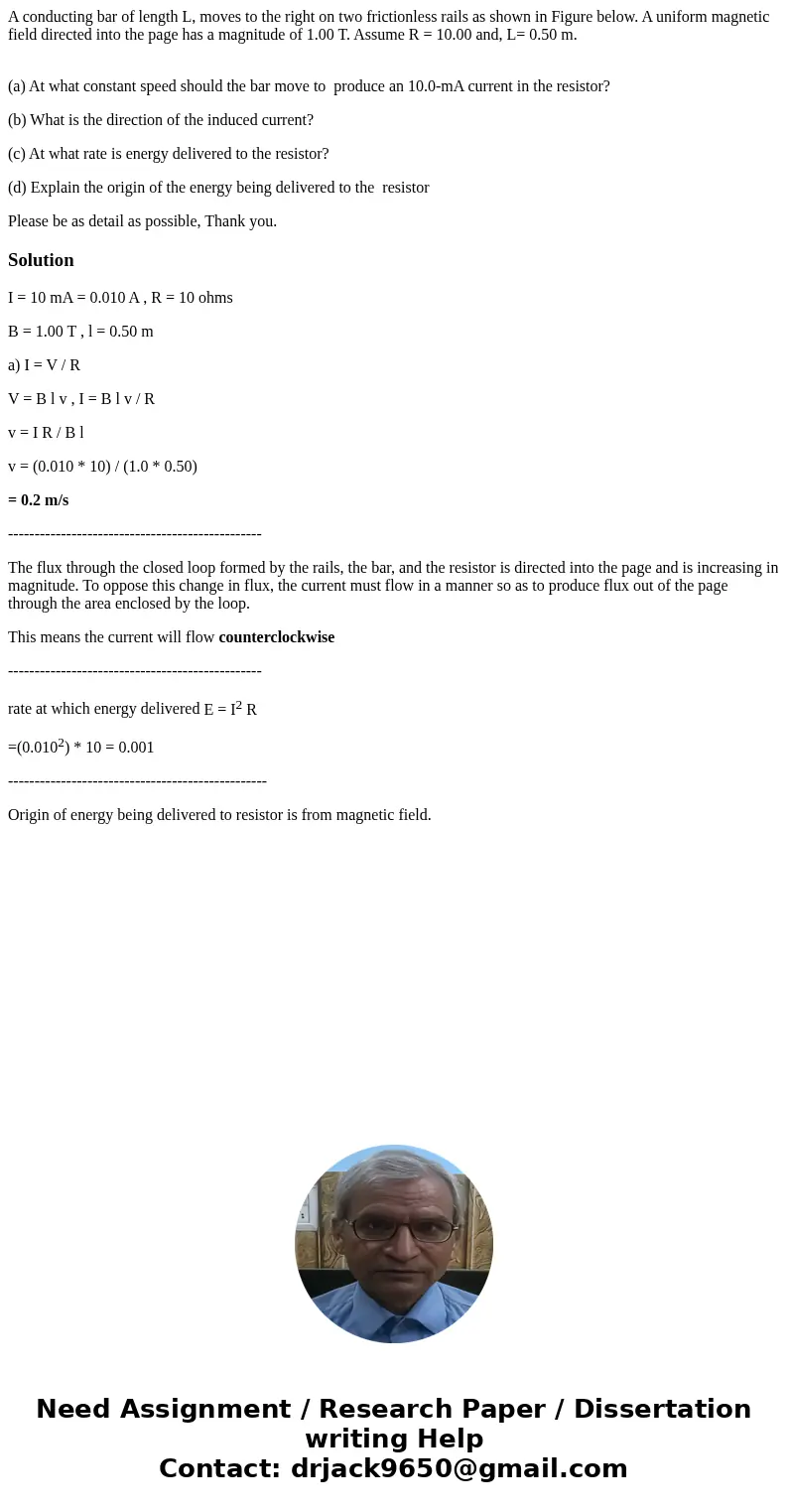A conducting bar of length L moves to the right on two frict
A conducting bar of length L, moves to the right on two frictionless rails as shown in Figure below. A uniform magnetic field directed into the page has a magnitude of 1.00 T. Assume R = 10.00 and, L= 0.50 m.
(a) At what constant speed should the bar move to produce an 10.0-mA current in the resistor?
(b) What is the direction of the induced current?
(c) At what rate is energy delivered to the resistor?
(d) Explain the origin of the energy being delivered to the resistor
Please be as detail as possible, Thank you.
Solution
I = 10 mA = 0.010 A , R = 10 ohms
B = 1.00 T , l = 0.50 m
a) I = V / R
V = B l v , I = B l v / R
v = I R / B l
v = (0.010 * 10) / (1.0 * 0.50)
= 0.2 m/s
------------------------------------------------
The flux through the closed loop formed by the rails, the bar, and the resistor is directed into the page and is increasing in magnitude. To oppose this change in flux, the current must flow in a manner so as to produce flux out of the page through the area enclosed by the loop.
This means the current will flow counterclockwise
------------------------------------------------
rate at which energy delivered E = I2 R
=(0.0102) * 10 = 0.001
-------------------------------------------------
Origin of energy being delivered to resistor is from magnetic field.

 Homework Sourse
Homework Sourse